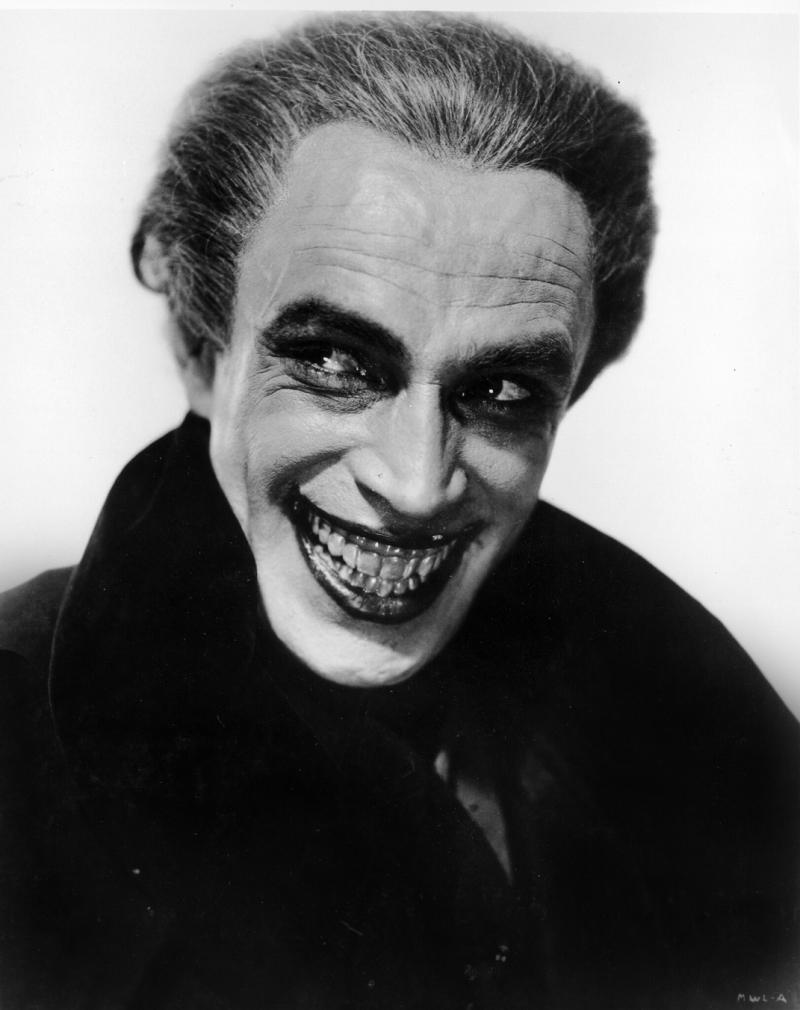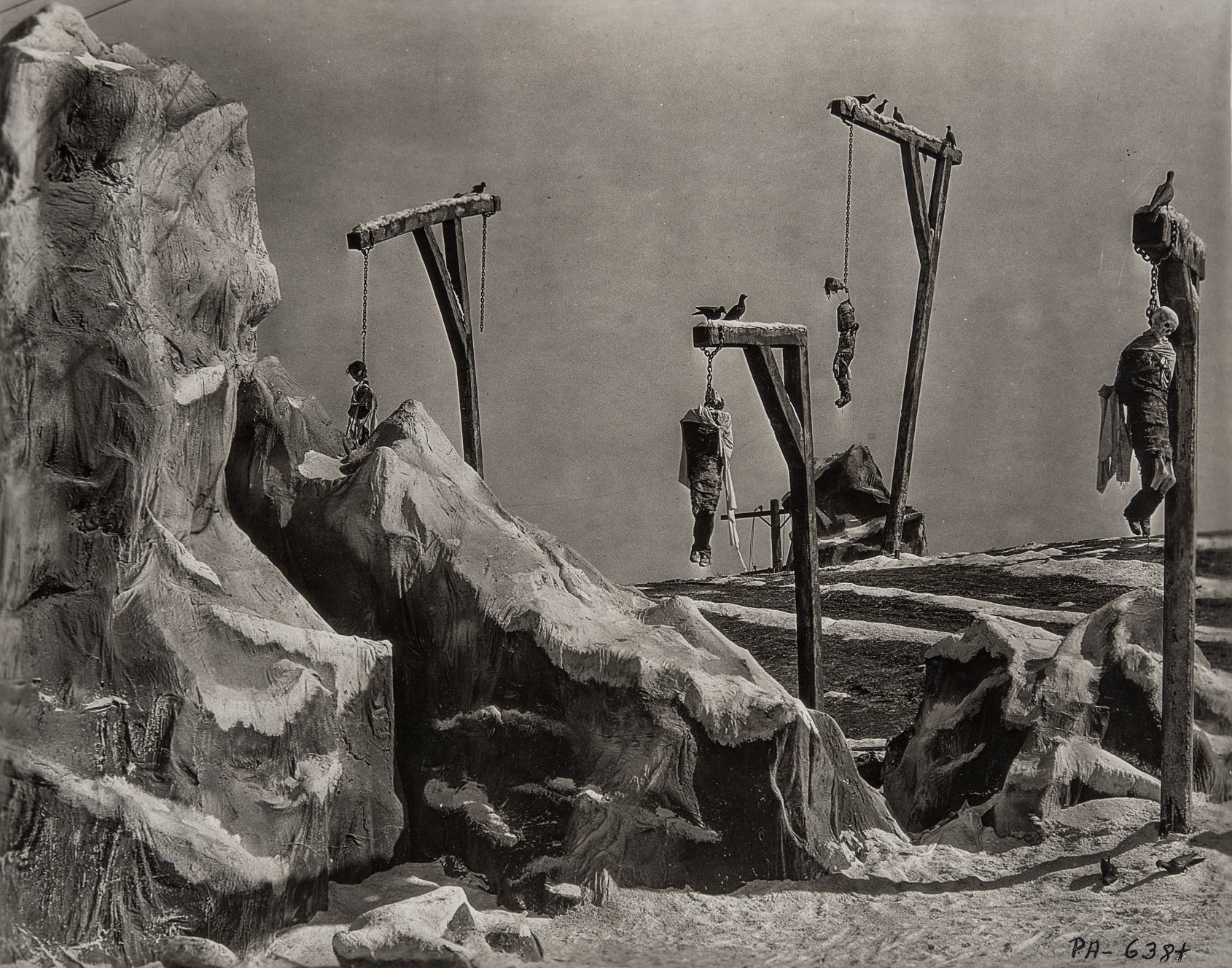Blu-ray: The Man Who Laughs | reviews, news & interviews
Blu-ray: The Man Who Laughs
Blu-ray: The Man Who Laughs
Silent cinema's Joker template has its own grotesque power

Batman’s cartoonists cribbed the Joker’s face from Conrad Veidt’s rictus grin, backswept hair and crazed stare in this 1928 silent classic.
Barkilphedro (Brandon Hurst) is the goblin-faced jester, at once unctuous and sardonic, who first materialises from a secret door in stone sarcophagi to aid James II in the ruin of Scottish rebel Lord Clancharlie, whose son Gwynplaine has a permanent “smile” carved into his mouth. Ashamedly masking this till he’s taken in by kindly old Ursus, he becomes an adult, freakish attraction among strolling players including blind, devoted Dea (Phantom of the Opera’s Mary Philbin). Only when the court again intrudes, as Barkilphedro learns his victim is alive and due the fortune now being spent by Duchess Josiana (Olga Baclanova, a randy flapper loose in Merrie London), does Gwynplaine confront his tormentors, drawing power from his terrible grin to roar at them: “God made me a man.”
 The Man Who Laughs’ generous $1 million budget means silent Hollywood’s considerable resources are all on the screen. Eighteenth-century England is vividly revived, from Southwark Fair’s lusty chaos to Queen Anne’s velvet-cloistered sanctum. Leni and Universal’s craftsmen push the spectacle to macabre extremes, as the boy Gwynplaine trudges beneath towering gibbets in a land of snow, and an Iron Lady drops into view and swings shut on his dad amidst abstract blackness. Leni tips cameras low and high and cuts fast, adding sharp Impressionist angles to an England steeped in German shadows, which would mutate after the next war into film noir.
The Man Who Laughs’ generous $1 million budget means silent Hollywood’s considerable resources are all on the screen. Eighteenth-century England is vividly revived, from Southwark Fair’s lusty chaos to Queen Anne’s velvet-cloistered sanctum. Leni and Universal’s craftsmen push the spectacle to macabre extremes, as the boy Gwynplaine trudges beneath towering gibbets in a land of snow, and an Iron Lady drops into view and swings shut on his dad amidst abstract blackness. Leni tips cameras low and high and cuts fast, adding sharp Impressionist angles to an England steeped in German shadows, which would mutate after the next war into film noir.
There’s dash and pace to a swashbuckling final reel, and huge enjoyment in this richly realised, grotesquely peopled melodrama, like Dickens with a touch of Grimm.
Extras include an interview with horror authority Kim Newman, and a short documentary on the film’s making.
The future of Arts Journalism
You can stop theartsdesk.com closing!
We urgently need financing to survive. Our fundraising drive has thus far raised £49,000 but we need to reach £100,000 or we will be forced to close. Please contribute here: https://gofund.me/c3f6033d
And if you can forward this information to anyone who might assist, we’d be grateful.

Subscribe to theartsdesk.com
Thank you for continuing to read our work on theartsdesk.com. For unlimited access to every article in its entirety, including our archive of more than 15,000 pieces, we're asking for £5 per month or £40 per year. We feel it's a very good deal, and hope you do too.
To take a subscription now simply click here.
And if you're looking for that extra gift for a friend or family member, why not treat them to a theartsdesk.com gift subscription?
more Film
 Urchin review - superb homeless drama
Frank Dillane gives a star-making turn in Harris Dickinson’s impressive directorial debut
Urchin review - superb homeless drama
Frank Dillane gives a star-making turn in Harris Dickinson’s impressive directorial debut
 Mr Blake at Your Service review - John Malkovich in unlikely role as an English butler
Weird comedy directed by novelist Gilles Legardinier
Mr Blake at Your Service review - John Malkovich in unlikely role as an English butler
Weird comedy directed by novelist Gilles Legardinier
 Don't Let's Go to the Dogs Tonight review - vivid adaptation of a memoir about a Rhodesian childhood
Embeth Davidtz delivers an impressive directing debut and an exceptional child star
Don't Let's Go to the Dogs Tonight review - vivid adaptation of a memoir about a Rhodesian childhood
Embeth Davidtz delivers an impressive directing debut and an exceptional child star
 One Battle After Another review - Paul Thomas Anderson satirises America's culture wars
Leonardo DiCaprio, Teyana Taylor, and Sean Penn star in a rollercoasting political thriller
One Battle After Another review - Paul Thomas Anderson satirises America's culture wars
Leonardo DiCaprio, Teyana Taylor, and Sean Penn star in a rollercoasting political thriller
 Steve review - educator in crisis
Cillian Murphy excels as a troubled headmaster working with delinquent boys
Steve review - educator in crisis
Cillian Murphy excels as a troubled headmaster working with delinquent boys
 Can I get a Witness? review - time to die before you get old
Ann Marie Fleming directs Sandra Oh in dystopian fantasy that fails to ignite
Can I get a Witness? review - time to die before you get old
Ann Marie Fleming directs Sandra Oh in dystopian fantasy that fails to ignite
 Happyend review - the kids are never alright
In this futuristic blackboard jungle everything is a bit too manicured
Happyend review - the kids are never alright
In this futuristic blackboard jungle everything is a bit too manicured
 Robert Redford (1936-2025)
The star was more admired within the screen trade than by the critics
Robert Redford (1936-2025)
The star was more admired within the screen trade than by the critics
 Blu-ray: The Sons of Great Bear
DEFA's first 'Red Western': a revisionist take on colonial expansion
Blu-ray: The Sons of Great Bear
DEFA's first 'Red Western': a revisionist take on colonial expansion
 Spinal Tap II: The End Continues review - comedy rock band fails to revive past glories
Belated satirical sequel runs out of gas
Spinal Tap II: The End Continues review - comedy rock band fails to revive past glories
Belated satirical sequel runs out of gas

Add comment